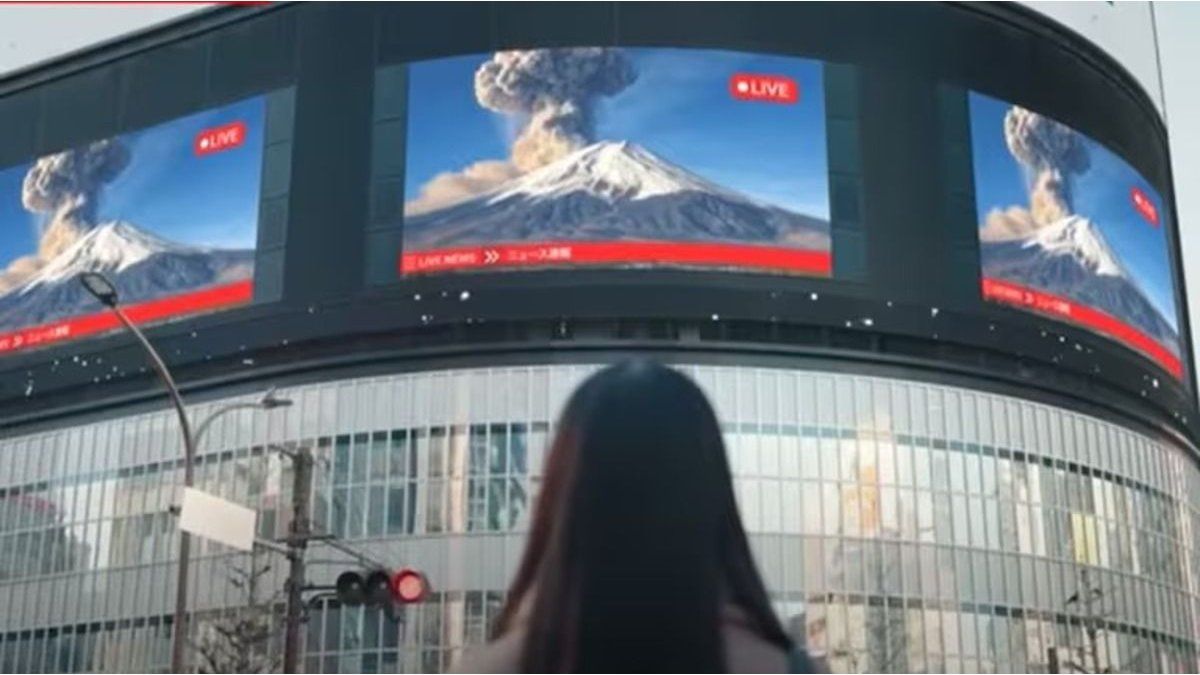The Tokyo Metropolitan Government spread a video generated with artificial intelligence that recreates the effects that could cause a eventual eruption of Mount Fuji. The objective of the audiovisual piece, published by the Disaster Prevention Division, is raise awareness of the population about the measures to be taken in front of an episode of this type.
The material, of three minutes duration And performed entirely with fictitious images, it was shared on Sunday and shows the estimated time that an eruption would reach the Japanese capital. The closest antecedent of activity in said volcano It goes back to December 16, 1707, more than three centuries ago.
The simulation with AI on a possible eruption of Mount Fuji
The simulation starts with a “Maximum alert“That a young woman receives on her cell phone, warning about the beginning of the volcanic activity. A voiceover emphasizes that “The moment of the eruption can come without prior notice”
Tokyo volcano
The video was shared to raise awareness among the possible consequences of the eruption.
Disaster Prevention Division of the Tokyo Metropolitan Government
Then you see how a ashes column emerges from the 3,776 -meter high volcano crater. The report indicates that, given a possible eruption, Tokyo would be mired in the dark in less than two hours, under a thick layer of ashes, which would impact on health, mobility and everyday life.
One of the prevention measures that local authorities recommend to their citizens is that of Store basic provisions (Water and non -perishable foods) enough for two weeks, in order to mitigate the immediate effect of an event of that magnitude.
Japan: Earth of earthquakes, eruptions and tsunamis
Located in the Pacific Fire Belt, Japan has reinforces its protocols against earthquakes, tsunamis and eruptions for yearsespecially after the 2011 tsunami.
An eruption of Mount Fuji could yield more than 1.7 billion cubic meters of ash, of which about 500 million would be deposited on routes, buildings and water reservoirs, generating huge difficulties in its removal, according to the medium CNN Japan.
The economic impact of this natural phenomenon would be 2.5 billion yen (US $ 16,600 million). Even an eruption of less intensity and impact would be sufficient to interrupt public transport and paralyze trains, while the rains would aggravate the collapse on the roads.
Image
The mountain has not had an eruption for 300 years.
Wikipedia
The last eruption of Fuji occurred between 1707 and 1708, During the Hei period. He did not expel Lava, but large amounts of ashes and pumice stones that arrived to Edo, the current Tokyo, located more than 100 kilometers.
That episode opened a new crater on the southeast hillsidehe buried villages and crops and generated famines for the destruction of the crops. Although since then the volcano remains inactive, specialists insist that it is still under strict surveillance, given its proximity to a metropolis of more than 37 million inhabitants.
Source: Ambito




